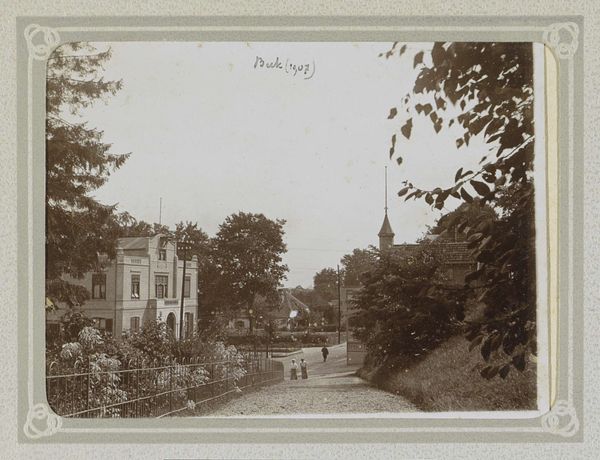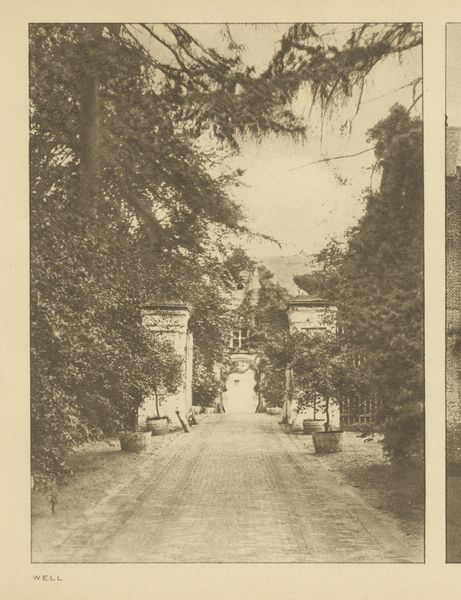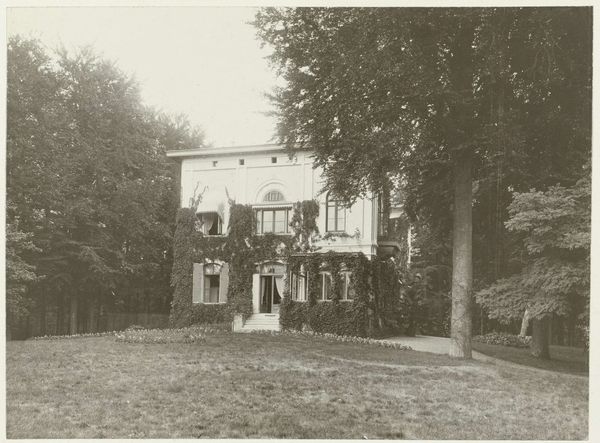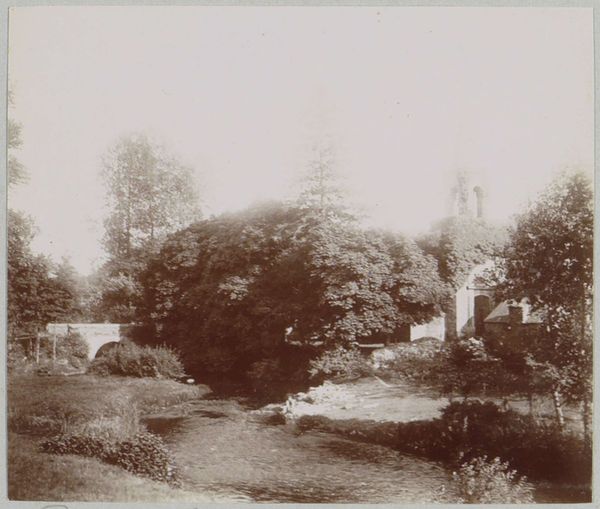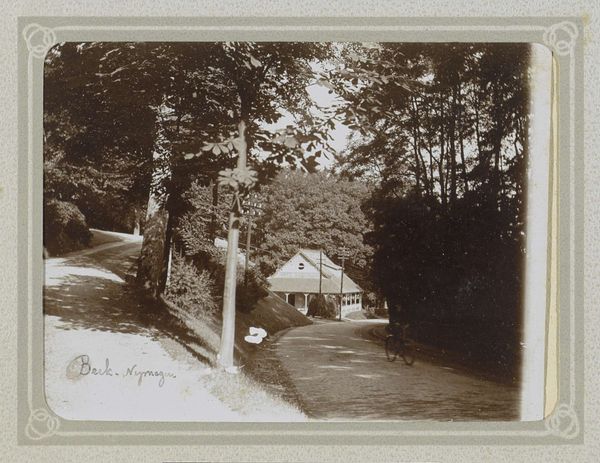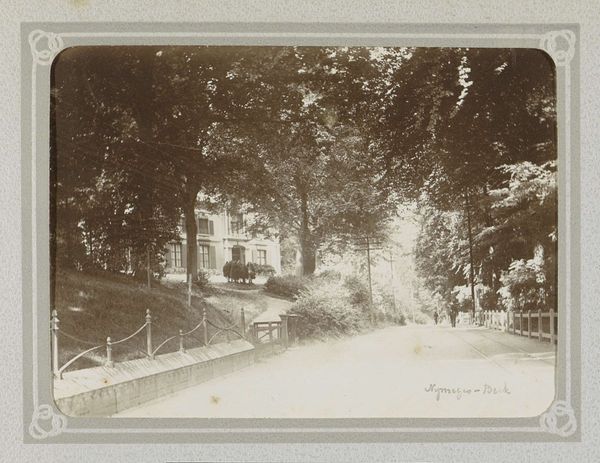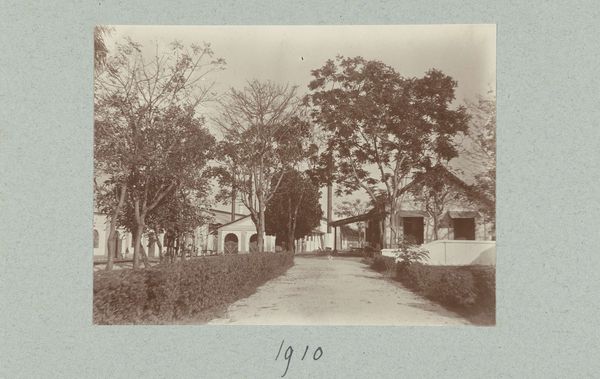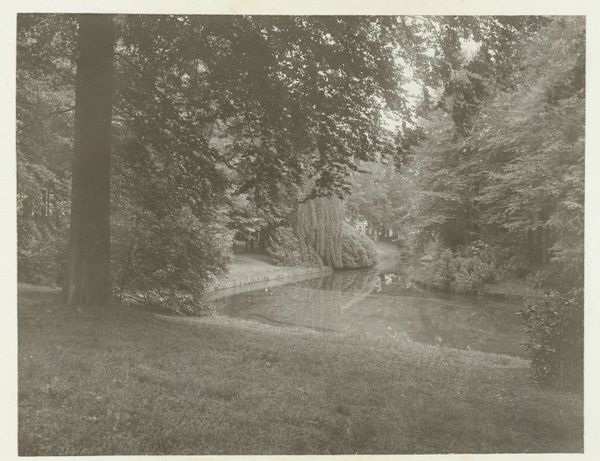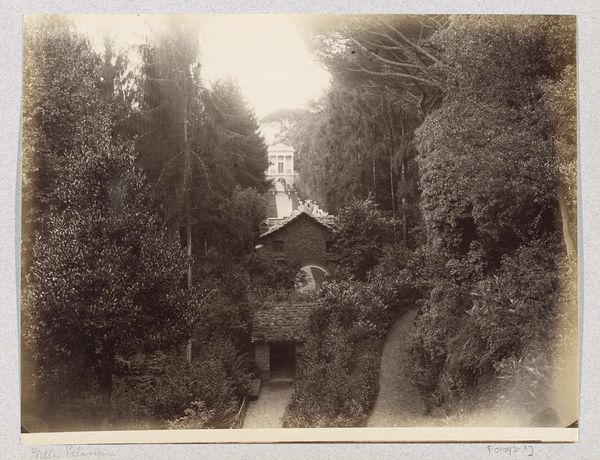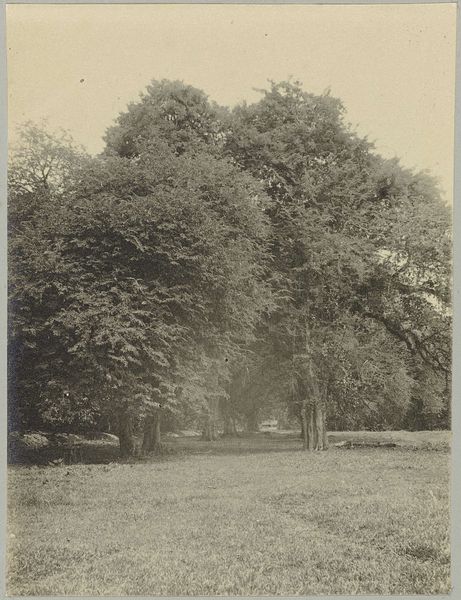
photography
#
landscape
#
street-photography
#
photography
#
realism
Dimensions: height 81 mm, width 110 mm
Copyright: Rijks Museum: Open Domain
Curator: This is a photograph by Folkert Idzes de Jong, titled "Laan met een gezicht op Hotel Laag Soeren," likely taken between 1905 and 1907. Editor: It evokes such a sense of faded elegance. The monochromatic palette makes it appear almost like a memory surfacing from the past, leading towards this stately building obscured by the towering trees. What kind of photographic materials do you think he used to capture this scene? Curator: Given the period, it would almost certainly be a gelatin silver print. These prints offer a sharpness and tonal range quite striking here; that detail really enhances how those massive trees frame the perspective, don't you think? The long road draws your eye right to the hotel. A deliberate use of leading lines if ever I saw one! It guides your eye toward that cultural monument, or social gathering spot of the moment, rendered almost dreamlike. Editor: Exactly. The framing isn't accidental. It's fascinating how De Jong uses what's readily available – the trees, the lane – to dictate not just composition but also narrative. Was Hotel Laag Soeren a cultural or political meeting place? I imagine that access to photographic materials influenced who got to decide whose story to memorialize in a photo. The sepia tone enhances that, I would add. Curator: Yes, very much a place for the wealthy and influential of the time, giving the photograph an indexical nature linked with its social status. What seems simple, almost documentary, hints at layers of meaning regarding Dutch society at the turn of the century. It also connects to our persistent need to inscribe value, even prestige, onto specific locations, seen through the lens of nostalgia. Editor: This discussion is reminding me how even realistic images rely on manipulation—in lighting, process, and the social framework in which photographs emerge, impacting the viewer's response. Curator: Precisely; an image always relies upon our understanding, whether implicit or explicit, to transmit intended, and unintended meaning, something photographs taken at the time were acutely aware of, or maybe less so. Editor: Thinking about the value it conveys in documenting the intersection of wealth, landscape, and representation provides much-needed nuance when contemplating historical shifts in both cultural and political perspectives in landscape painting.
Comments
No comments
Be the first to comment and join the conversation on the ultimate creative platform.

